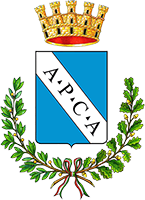
The Renaissance in Amelia was a period of great magnificence. Wealthy citizens embellished their palaces, similarly to what was being pursued by the Orsini in Bomarzo, the Farnese in Caprarola and so on. Some prelates and important people occupied positions of power in the Roman Curia, such as Hippolito and Cesare Naccarato, the latter vice papal legate, Angelo Archileggi, Fantino Petrignani, Batolomeo II and III Farrattini, Giovanni and Filippo Venturelli, Svetonio, Cristoforo and Silla Cansacchi, Clemente Clementini, but it is mainly the story of the Geraldini family, one of the most representative of the Amelia of the 14th and 15th centuries, which offer us an ideal glimpse for understanding the cultural and political climate of Italy and Europe in the age of the Renaissance.
What is certain, is that the family fortune came from the relationship of Amelia with Rome and with the Aragonese, relationships that allowed the inclusion of the Geraldini in the judiciary and in diplomacy and together they offered the opportunity to forge fruitful relationships with powerful families, including the Colonna and the Borgia. The family had many members in the secular clergy, obtaining prestigious commissions: diplomats, governors of cities, abbreviators of apostolic letters, bishops. It seems that Alessandro Geraldini, at the court of Spain, and confessor of Queen Isabella, interceded so that Columbus got the three caravels to take the fateful trip.
He was later appointed the first resident Bishop in the New World, in Santo Domingo, where he died on March 8th, 1524. At the beginning of the 15th century, Amelia is all a construction site: mansions were installed along the route of the ancient persistence, from Porta Romana to the cross of Borgo. Cardinals and bishops dedicated more than most to the pleasures of art and collecting antiques, commissioned fresco cycles within the palaces and mansions and transformed these in large spaces articulated on the one hand as a city of palaces, and on the other as country residences. The second half of the 15th century witnessed in Umbria and Lazio, a radical transformation of the type of interior decoration: in particular the Umbrian town of Amelia is a testimony to that effect, authoritative guidance of a new decoration of boardrooms, centered on the use of continuous frieze.
All this probably suggests the birth and development in the city of a real “Amelia school” with patrons, artists and citizens of the neighboring cities. In 1599, Cardinal Federico Borromeo was hosted at Palazzo Cansacchi. In later centuries, until the Risorgimento, the story of Amelia is identified with that of the State of the Church.


